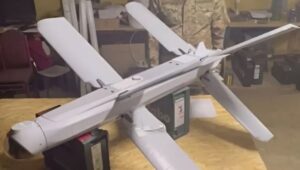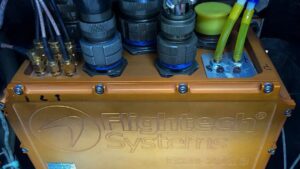If you’re about to purchase your DJI Mini 4 Pro, you’ll have to choose between the DJI RC 2 vs RC-N2 controller. Of the two Mini 4 Pro controllers, which is better? Is it worth upgrading to the more expensive DJI RC 2? After all, the key differences between these two controllers boil down largely just to price.
If you’re made of money, go ahead and skip reading and just buy the pricier DJI RC 2. But if you’re judicious with your spending — and only want to buy what’s truly worth it — then here’s your ultimate guide to deciding between the DJI RC 2 vs RC-N2:
DJI RC 2 vs RC-N2: how to choose
The DJI RC-N1 is the DJI Mini 4 Pro’s standard remote controller that pairs with your smartphone or tablet. Download the DJI app to allow that phone or tablet to display a live feed from the drone’s camera. The app also allows you to check the flight status and adjust settings on your smartphone.
However, for an additional $200, you can skip using your smartphone altogether. That’s because the DJI RC 2 features a built-in 5.5-inch, 1080p 700-nit high-brightness screen that takes over all the functions you’d normally rely on your smartphone for.
So, how do you decide between convenience and price? Here’s a breakdown of the pros and cons of both DJI drone controllers to help you make the right choice for you.
| DJ RC 2 | DJI RC-N2 | |
| Screen | 5.5″ 1080p FHD Screen | N/A |
| Screen Brightness | 700 nits | N/A |
| Video Transmission | DJI O4Features enhanced anti-interference capabilities and crystal-clear, low-latency video transmission within a 20km max range. | |
| Antenna | 2T4R | 2T2R |
| Max Flight Time | Max 3 hours (though you’re limited by your smartphone/tablet battery life) | Without charging any mobile device: 6 hoursWhen charging a mobile device: 3.5 hours |
| Live Streaming | Does not support installing third-party apps for live streaming.Supports RTMP live streaming in the DJI Fly app. | Supports live streaming through the connected smartphone. |
DJI RC 2: convenience at a price
Opting for the DJI RC 2 with your DJI Mini 4 Pro purchase will increase your total from $759 to $959, a 26% price hike. Despite this, many find the convenience of a built-in screen worth the extra cost. It saves you the hassle of mounting your phone to the controller and keeps your phone free during flights.
You won’t have to worry about bringing the right cord or remembering to charge your phone before flying. Post-flight, you can connect the controller directly to your drone via Wi-Fi for quick footage transfers to your smartphone. The controller also boasts a 5.5-inch 1920×1080 FHD screen with 700 nits of brightness for better outdoor visibility and comes pre-installed with the DJI Fly app.
Compared to its predecessor, the DJI RC 2 features upgraded video transmission and an improved antenna configuration, switching from 1T2R to 2T4R. This enables it to support O4 video transmission with the DJI Mini 4 Pro, offering both internal and external antennas that can be manually adjusted for better video quality. Additionally, it includes 32 GB of built-in storage, providing a backup in case you forget your Micro SD card or run out of storage.
Additionally, the DJI RC 2 also comes with 32 GB of built-in storage. You’ll still want to bring along a Micro SD card, but it can come in a pinch if you forget your card or are out of storage.
DJI RC-N2: budget-friendly option
The DJI RC-N1 remains a cost-effective choice that delivers a great flying experience. While lacking a built-in screen, it allows for real-time HD image display on your smartphone through the DJI Fly App. This controller is not limited to the DJI Fly App. It can also use other third-party apps, like Litchi, or be used for FPV flying without breaking the bank.
The DJI RC-N1 has received an upgrade to the DJI RC-N2. The upgrade offers the ability to monitor live feeds and flight status directly on your smartphone screen. The video transmission and antenna system have also been improved, supporting O4 video transmission with the DJI Mini 4 Pro.
The DJI RC-N1 is a budget-friendly remote controller that offers a great flying experience.
While it does not come with a built-in screen, it can be connected to a smartphone. This allows you to display HD images in real-time on your phone through the DJI Fly App.
DJI RC 2 vs. DJI RC-N2: what is right for you?
The $200 difference can seem steep. However, if convenience and ease of use are your priorities, the DJI RC 2 is worth considering. It frees up your phone for other uses during flights, allowing you to access weather conditions, Google Maps, and more.
However, if budget is your main concern when purchasing the DJI Mini 4 Pro, the DJI RC-N1 is a solid choice. You always have the option to upgrade later, as the DJI RC 2 is available for separate purchase.
- Purchase the DJI Mini 4 Pro with RC 2 from Amazon
- Purchase the DJI Mini 4 Pro with RC-N2 from Amazon
The post DJI RC 2 vs RC-N2: should Mini 4 Pro pilots upgrade? appeared first on The Drone Girl.













 CMOS image sensor
CMOS image sensor